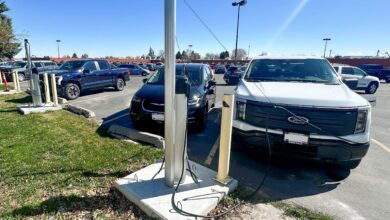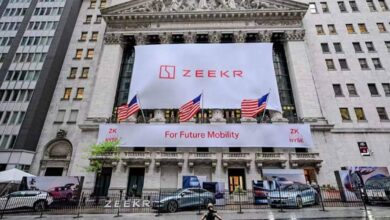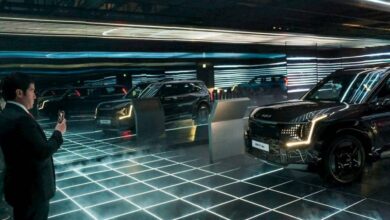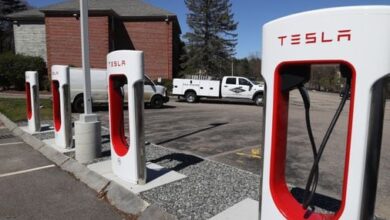Ride-hailing company Alto launching electric vehicle rollout in Dallas
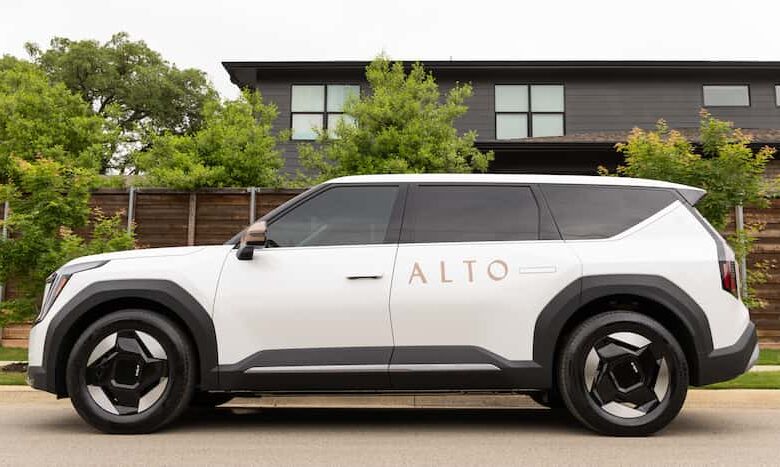
If you’re hailing a ride in Dallas this month, you could be picked up by a fully electric vehicle.
Dallas ride-hailing company Alto launched its first electric fleet of Kia EV-9s in April. The 12 Kias are the first step toward the company’s goal of adding another 100 electric vehicles in Dallas by the end of the year. Riders will not pay extra to ride in one of the electric vehicles and the move will not impact the company’s price structure.
“We think electric is the future and our goal is to be 100% electric,” CEO and founder Will Coleman said. “It will take us different amounts of time to make that transition in different cities, but we know that we can scale from here very quickly.”
Alto operates differently from competitors like Uber and Lyft. Vehicles are company-owned and drivers are W-2 employees rather than contractors. Drivers have in-app control over things like music and conversation preferences, and Alto uses a single vehicle type — Buick Enclaves for internal combustion vehicles and now EV-9s for electric.
Drivers will receive standardized training on driving the EVs, helping mitigate accident risk, and riders can expect consistency. Those differences allow for an easier transition to electric.
“We think we can offset some of those traditional challenges with EVs through our model, and that will help us keep our costs lower than our competitors and allow us to move more quickly,” Coleman said.
Alto is not alone in its move toward greener transport. Uber has pledged to transition to a zero-emission platform in the U.S. and Canada by 2030, with 100% of rides and deliveries to be made via electric vehicle or public transit by 2040. Uber electric vehicle drivers can earn extra for rides and access charging discounts, as well as rent an EV through a company partner.
Lyft announced a goal of 100% electric vehicles on its platform by 2030, and drivers can also get discounts on fast charging.
Rideshare providers say electrification means smoother, quieter rides for passengers as well as less maintenance and lower fuel costs for drivers. But electric vehicles can cost more upfront and require pricier repairs, and those costs can be a barrier for rideshare drivers.
That’s where Alto has an advantage, Coleman says.
“Typically the break-even point for someone to kind of realize the cost savings that’s attributable to an EV is 50, 60, 70,000 miles into the lifespan of the vehicle,” Coleman said. “A company like ours can better support that kind of cost trade-off than an individual.”
Electrification is just one component of Alto’s green ethos, according to Coleman. By design, the company has fewer vehicles on the road than competitors to reduce congestion, though it translates to slightly longer wait times for customers.
“In order to serve the same number of customers with an 11-minute wait time versus a five-minute wait time, we actually need something like six to 10 times fewer vehicles on the road, and that’s a really important part of creating a more efficient solution for cities,” Coleman said.
While environmental experts agree that electric vehicles run cleaner, some research has cast doubt on how much of a net positive rideshare electrification will create. A 2023 study by the University of Michigan estimates that full rideshare electrification would only offer a modest societal benefit when factors other than emissions are accounted for.
With spotty charging infrastructure, electric rideshare vehicles tend to travel further without a passenger than internal combustion engines, the study found. That time on the road means increased traffic and collision risks.
“If you want to cut emissions and air pollution EVs do really well, but most of the societal problems we have with cars is because they’re cars,” said Parth Vaishnav, senior study author and assistant professor at UM’s School for Environment and Sustainability. “Traffic, crashes, noise — EVs don’t solve any of those problems.”
Coleman said that since Alto vehicles are returned to the depot between shifts and live there, drivers don’t have to worry about finding chargers on the road.
“Because we can bring together both our own dedicated charging and the vehicles into one place, that allows us to kind of overcome that constraint in a way that an individual might not be able to,” Coleman said. “We think that our business model and the way we work is definitionally going to allow us to make this transition much more swiftly than our competitors or others in the space.”
